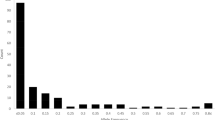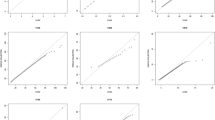Abstract
Quinoa (Chenopodium quinoa) is an Andean crop with a high potential for cultivation under temperate agricultural conditions. A new quinoa cultivar for such an environment requires plant characteristics that may be available primarily largely in genetic resources held in gene banks. A core collection may simplify management and enhance the utilisation of quinoa genetic resources. This paper describes the development of a core subset of the whole quinoa gene bank (1029 accessions) of the Universidad Nacional del Altiplano (UNAP). All accessions available in this gene bank have location and altitude descriptors and a partial description for qualitative and quantitative descriptors. The core collection (103 accessions) contains chosen ecotypes or landraces that capture most of the genetic variability available in this Peruvian germplasm. The accessions were selected for the core collection based on a geographically stratified non-overlap** sampling procedure. The number of accessions that were allocated to the core subset was determined using a proportional method adjusted by the relative importance of the quinoa crop in each geographical cluster as determined by its acreage. The sampling method also considered the morphological diversity within four geographical clusters of at least 100 accessions. The multivariate pattern of morphological variation was defined within each of these clusters by independent principal component analyses. A comparison of phenotypic diversity between the entire collection and its core subset confirmed that the proper sampling strategy for this core collection of Peruvian quinoa germplasm had been applied. The most important phenotypic correlations between quantitative descriptors observed in the entire collection, which may be under the control of co-adapted gene complexes, were also preserved by the core collection. The most comprenhensive quinoa core collection should consider accessions from other gene banks in Bolivia and Ecuador, a few accessions from coastal Chile and wild sympatric cross-compatible Chenopodium species. This core collection will be a point of entry to the proper exploitation of the genetic resources available in respective quinoa gene banks.
Similar content being viewed by others
Author information
Authors and Affiliations
Additional information
Received: 1 May 1997 / Accepted: 20 October 1997
Rights and permissions
About this article
Cite this article
Ortiz, R., Ruiz-Tapia, E. & Mujica-Sanchez, A. Sampling strategy for a core collection of Peruvian quinoa germplasm. Theor Appl Genet 96, 475–483 (1998). https://doi.org/10.1007/s001220050764
Published:
Issue Date:
DOI: https://doi.org/10.1007/s001220050764




